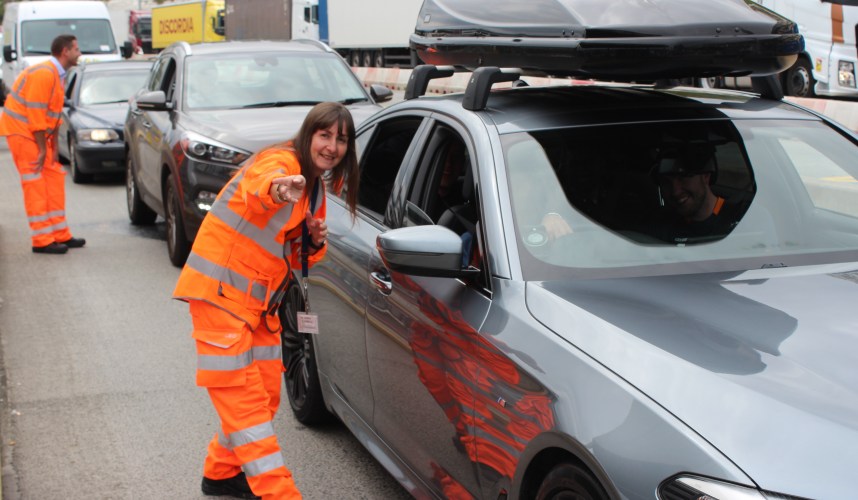July 14, 2022
The Port of Dover is expanding interim border control infrastructure, improving traffic systems and issuing fresh traveller guidance ahead of the busy summer travel season, which is expected to return to pre-pandemic volumes this year.
- To help keep waiting times to a minimum, the Port is installing 50% more booths for use by French border control to enable greater passenger throughput, with installation to be completed before the key summer getaway weekend of 22-24 July.
- Internal traffic routes around the Port have been repositioned to improve vehicle flows and give more flexibility in managing busy periods.
- The Port’s expanded team of Passenger Champions will be mingling with customers on-site to provide help and information.
- Welfare provisions such as toilet facilities and a new refreshment stand will be available ahead of border controls, subject to opening times
The Port of Dover strongly recommends the following to all passengers:
- As the UK is no longer part of the European Union, holidaymakers are subject to enhanced checks at the border, and passengers are advised to expect average wait times of around 60-90 minutes for French border controls at the Port during peak periods.
- Confirm ticket availability or book tickets prior to travelling to the port.
- Before setting off, visit your ferry operator’s website for updates.
- Read Kent County Council’s ‘check before you travel’ guide, to be fully prepared for your journey.
- Allow plenty of time for your journey, and arrive only for your allotted sailing.
- Bring adequate supplies, including food and water, in case of delays.
- Travel via main routes only, to avoid causing traffic delays for yourself and local residents.
- Have your documents ready to show at French border controls and check-in booths. These include passports, vaccination certificates or Covid test results, if applicable. This will ensure the quickest possible transit and reduce the queuing time for other vehicles.

